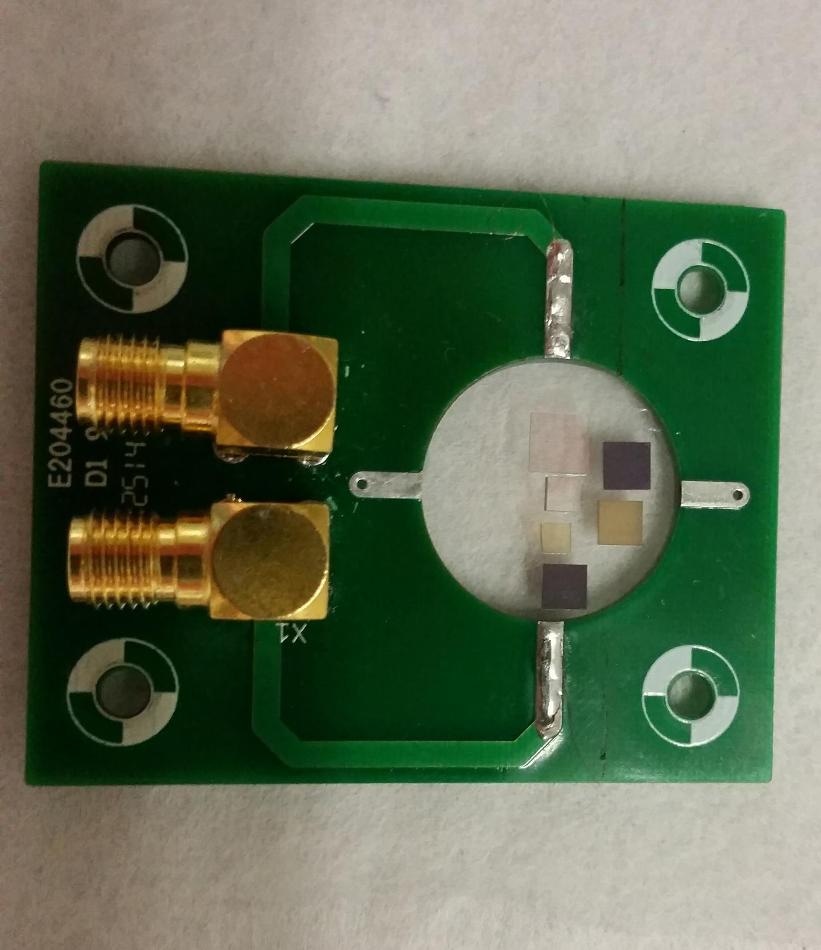Sep 25 2017
A simple method will be able to provide diamonds the exceptional properties needed for quantum applications such as sensing magnetic fields.
 Diamonds with different properties ready to be measured CREDIT: Dima Farfurnik
Diamonds with different properties ready to be measured CREDIT: Dima Farfurnik
Pure diamond is made up of carbon atoms in a perfect crystal lattice. However, a diamond with special quantum-sensing properties can be obtained if a few carbons are removed and a few others are swapped for nitrogen. These properties are considered to be beneficial for information applications and sensing magnetic fields, and also as a platform for exploring the mysteries of quantum physics.
A nitrogen atom forms a nitrogen-vacancy (NV) center when it is next to the space vacated by a carbon atom. Researchers have recently demonstrated how they can produce more NV centers, which makes sensing magnetic fields an easy task, using a comparatively simple method capable of being performed in many labs. The Researchers have described their results in the recent edition of Applied Physics Letters, from AIP Publishing.
A key example for the importance of this sensing is presented by magnetic field sensing. Green light is capable of inducing the NV centers to fluoresce and emitting red light, but the amount of this fluorescence differs when a magnetic field is present. Diamond NV centers can help determine magnetic field strength by measuring the brightness of the fluorescence. Such a device has the potential to make magnetic images of a wide variety of sample types, including biological tissue and rocks.
The sensitivity of this type of magnetic detection is established by the concentration of NV centers, whereas vacancies that are not paired with nitrogen produce noise. Thus, effective conversion of vacancies into NV centers as well as maximizing the concentration of NV centers, plays a vital role in enhancing these detection methods.
Typically, Researchers purchase nitrogen-doped diamonds from a separate company. This is followed by bombarding the diamond with protons, electrons or other particles, which strip away a few of the carbon atoms, leaving behind vacancies. Finally, a heating process known as annealing pushes the vacancies next to the nitrogen atoms to produce the NV centers. The problem is that irradiation frequently needs sending the sample to a separate facility, which is time-consuming and expensive.
What is special about our approach is that it's very simple and very straightforward. You get sufficiently high NV concentrations that are appropriate for many applications with a simple procedure that can be done in-house.
Dima Farfurnik, The Hebrew University of Jerusalem, Israel
In order to locally develop NV center, their method employs high energy electron bombardment in a transmission electron microscope (TEM), which is an instrument accessible to a number of Researchers. Generally, a TEM is used for imaging materials down to subnanometer resolutions, however its narrow electron beam is also capable of irradiating diamonds.
Others have demonstrated that TEMs can develop NV centers in specialized diamond samples, however, the Researchers in this study have succeeded in testing the method on several diamond samples that are commercially available.
In a typical, untreated sample, less than 1% of the nitrogen atoms develop NV centers. But the Researchers increased this conversion efficiency to as high as 10% by using a TEM. In particular cases, the samples reached their saturation limit, and additional irradiation was no longer effective. For other samples, however, the Researchers did not hit this limit, proposing that additional irradiation might boost efficiencies further. Devices like magnetic sensors could be more compact with higher conversion efficiencies, and small irradiation volumes possible with a TEM.
The Researchers ensured that the method did not hinder the efficiency of NVs in applications like sensing magnetic fields by confirming that the length of time the NV centers remain in their states – the coherence time – did not change.
Physicists would be allowed to probe the quantum interactions among the centers themselves when adequate NV centers are packed in a diamond. This research will enable the production of a unique quantum state known as a squeezed state, which has never been proved before in a solid and could thus push the sensing capabilities of these systems beyond the existing classical limits.
We hope the enhanced number of NV centers due to irradiation will serve as a stepping stone for this long-term and ambitious goal.
Dima Farfurnik, The Hebrew University of Jerusalem, Israel